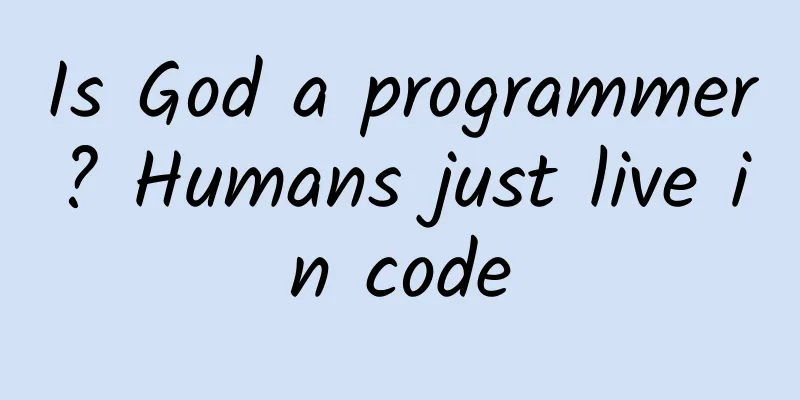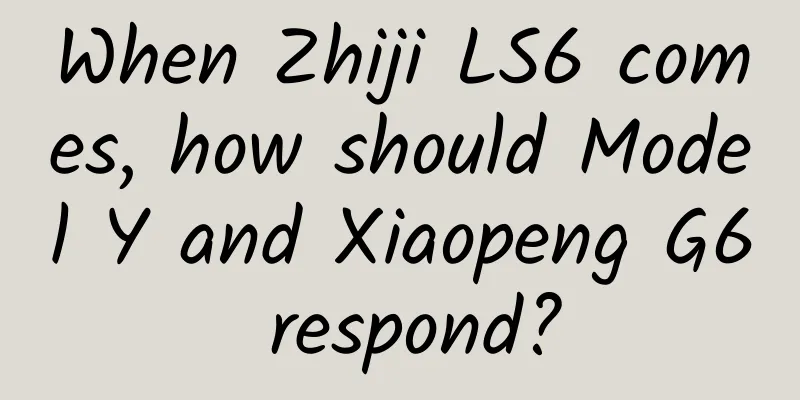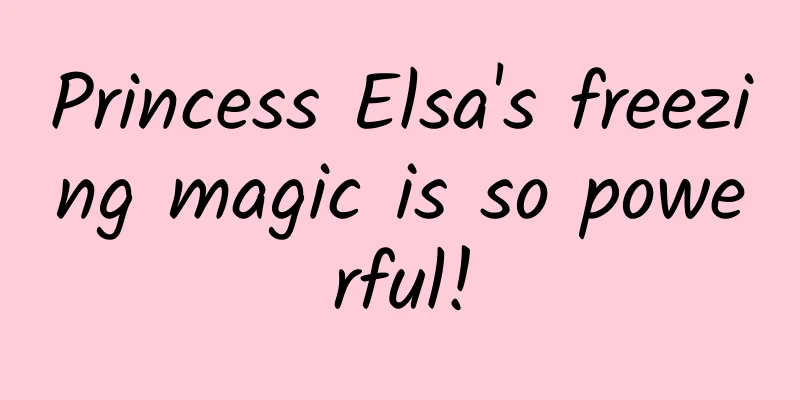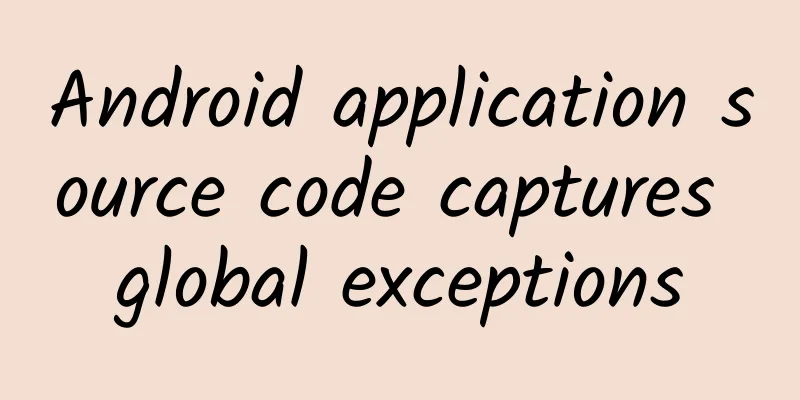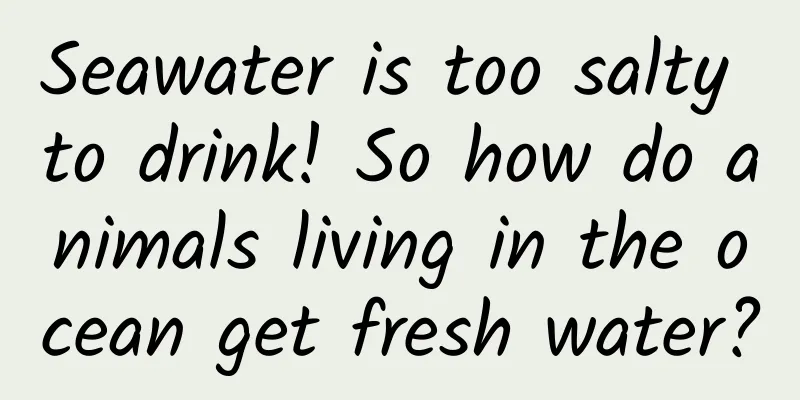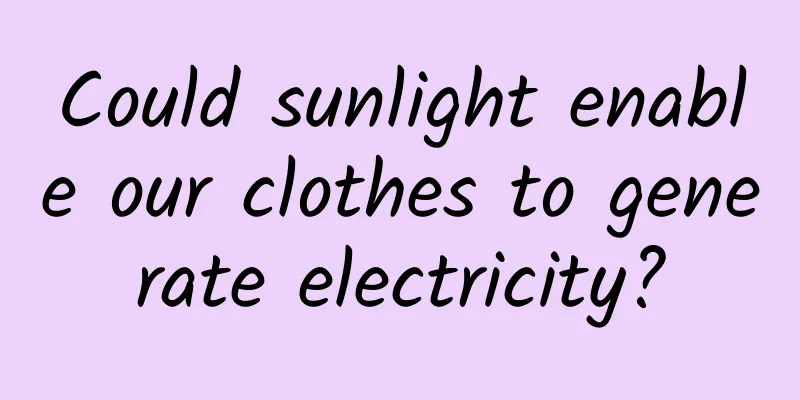This discovery that changed the fate of mankind was the result of the hard work of many Nobel Prize winners.
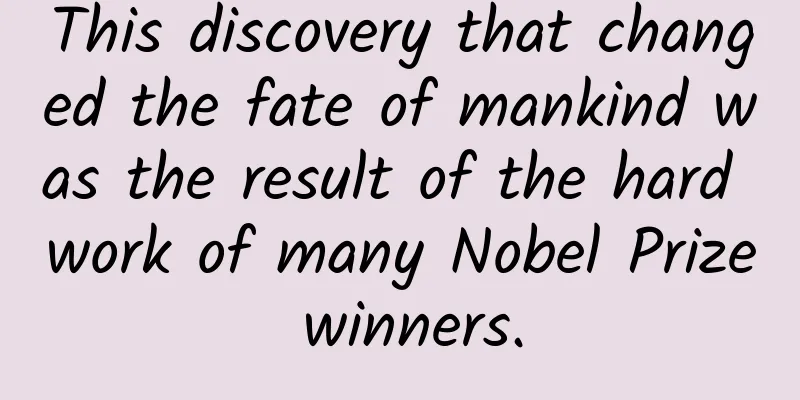
|
Nuclear energy is a double-edged sword for mankind: the peaceful use of nuclear energy provides a way out for mankind to solve the energy problem; nuclear weapons that have killed at least hundreds of thousands of people have always made mankind feel the threat of doomsday. The emergence of nuclear energy originates from the fission of heavy nuclei and related chain reactions. In December 1938, uranium nuclear fission was confirmed, opening the door for mankind to enter the era of nuclear energy and nuclear weapons, and eventually leading to the advent of the atomic bomb. In fact, the discovery of heavy nuclear fission went through a tortuous process. What thrilling stories are there? Written by | Wang Shanqin On August 6, 1945, an atomic bomb codenamed "Little Boy" exploded over Hiroshima, Japan. Although its core contained only 64 kilograms of enriched uranium, it destroyed half of the city and killed tens of thousands of people instantly. In the process, the mass loss of the entire bomb was less than 1 gram. The development of the extremely powerful atomic bomb consumed the efforts of more than 100,000 people on the Manhattan Project, but its basic principle - heavy nuclear fission - was discovered by accident. Nuclear energy, the atomic bomb, and science fiction In 1903, Ernest Rutherford (1871-1937) of the Cavendish Laboratory at Cambridge University and his student Frederick Soddy (1877-1956) calculated that the energy released by the decay of radioactive substances is at least 20,000 times the chemical energy of the same mass of substances, and may even reach a million times. In 1904, Soddy predicted that the energy released by radioactive processes may be used in the future, or even made into weapons. He believed that such weapons could change the fate of mankind and even destroy the world. Rutherford (left, 1892, 21 years old) and Soddy (right, 1921, 44 years old). 丨Image source: Public copyright Rutherford and Soddy's foresight preceded Einstein's theory of relativity and the mass-energy equation associated with it. Therefore, human understanding of atomic energy preceded the birth of the theory of relativity and the mass-energy equation (1905). Of course, later physicists also used Einstein's formula when explaining nuclear energy. Inspired by Soddy's view, British science fiction writer Herbert Wells (1866-1946) wrote the science fiction novel The World Set Free in 1913. In this book, the phrase "atomic bombs" first appeared. The author imagined that in 1956, Britain, France, the United States and Germany would go to war. An atomic bomb in a handbag would be enough to destroy half a city. These atomic bombs were dropped on all the important cities in the world. The continuous radioactivity caused continuous fires and caused huge damage. Wells (1920) | Photo credit: George Charles Beresford Wells' "predicted" atomic bomb was based on the principle that the radioactive material inside released energy through continuous radioactive decay. However, it was later proved that it was impossible to obtain nuclear energy on a large scale and make it into a weapon simply through the radioactive decay of matter. Such an "atomic bomb" could only be regarded as a radioactive pollutant, not a bomb. The basis for the use of atomic energy and the explosion of atomic bombs is the fission of heavy nuclei and the chain reaction related to it. Before the discovery of the fission of heavy nuclei, humans first discovered the fission of light nuclei and achieved artificial radioactivity. Light nuclear fission In 1932, John Cockcroft (1897-1967) and Ernest Walton (1903-1995) of the Cavendish Laboratory used a particle accelerator to accelerate protons and bombard lithium 7 with them. After the two collided, they split into two alpha particles. This process is called "splitting the atom", which achieved the fission of the atomic nucleus for the first time. Cockcroft (left), Rutherford (middle) and Walton (right). 丨Image source: Public copyright Cockcroft and Walton also found that the mass loss and energy released in this process conformed to Einstein's mass-energy relationship, for which they were awarded the Nobel Prize in Physics in 1951. In 1933, Rutherford gave a lecture in which he mentioned Cockcroft and Walton's work on splitting lithium with protons, but he did not think nuclear energy could be used on a large scale: "In these processes we may obtain much more energy than protons can give, but in general we cannot expect to obtain energy in this way." However, in the same year (1932) that light nuclear fission was achieved, the "sword" that would lead to heavy nuclear fission in the future had been found. After that, it hovered in the laboratory like a ghost for several years, and humans finally discovered heavy nuclear fission. neutron In 1920, Rutherford proposed that the nucleus of an atom is composed of positively charged protons and neutrally charged particles, which were later named "neutrons". In 1931, German physicist Walther Bothe (1891-1957) and his student Herbert Becker (birth and death dates are unknown) discovered that when alpha particles released by polonium decay bombard beryllium, boron or lithium, they produce a kind of radiation with strong penetrating power that is not affected by electric fields. They believed that this was gamma rays. In early 1932, Irène Joliot-Curie (1897-1956), the daughter of Pierre Curie (1859-1906) and Marie Curie (1867-1934), and her son-in-law Jean Joliot-Curie (1900-1958), also discovered this radiation in their experiments. Irène and Joliot also found that this neutral radiation had high energy: when they bombarded paraffin or any other hydrogen-containing compound, they would knock out protons. They still believed that this was gamma rays. Irene and Joliot (1935) | Photo source: Ph. Coll. Archives Larbor James Chadwick (1891-1974) of the Cavendish Laboratory found it unbelievable when he saw the paper published by Irene and Joliot. Gamma rays or even less powerful X-rays can deflect electrons when bombarding them (the "Compton effect"), but the mass of protons is thousands of times that of electrons, so how can they be knocked out of the nucleus by gamma rays? Chadwick was Rutherford's student and had long known Rutherford's hypothesis about the existence of neutrons, so he naturally guessed that these neutral radiations were likely neutrons. In order to confirm this guess as soon as possible, he immediately plunged into intense experiments. In February 1932, Chadwick proved that the high-energy neutral radiation was not gamma rays, but a group of uncharged particles with a mass almost the same as that of protons. These properties were consistent with the properties of the hypothetical neutrons, and they were neutrons. Chadwick | Image source: Nobel Prize official website (www.nobelprize.org) Chadwick soon realized that bombarding atomic nuclei with uncharged neutrons would be more efficient than positively charged alpha particles and protons, because they are not affected by the electric field forces of negatively charged extranuclear electrons and positively charged atomic nuclei. In addition, it is relatively easy to obtain neutrons: let the alpha particles released after the decay of radioactive elements such as radium and polonium bombard beryllium 9, turning it into carbon 12 and releasing a neutron. The discovery and confirmation of the neutron played a key role in the subsequent development of nuclear physics. Hans Bethe (1906-2005), a leading figure in the field of nuclear physics, believed that the era before 1932 was the prehistoric era of nuclear physics; the nuclear physics era began in 1932 because the neutron was discovered that year. Chadwick won the 1935 Nobel Prize in Physics for his discovery and confirmation of the neutron. Bothe, Becker, Irene and Joliot all missed the Nobel Prize in Physics. Artificial radioactivity In January 1934, Irene and Joliot discovered that after certain alpha particles bombarded (irradiated) aluminum foil, the foil remained radioactive even after the alpha particle source was removed. After confirming that there was nothing wrong with the Geiger counter, they speculated that in this process, the alpha particles combined with aluminum nuclei to form radioactive phosphorus 30, which released a neutron, and then phosphorus 30 decayed into silicon 30. Through chemical experiments, Irina and Joliot proved that phosphorus was indeed present in the product. This meant that the stable aluminum nuclei were artificially transformed into radioactive isotopes of phosphorus. Thus, they discovered artificial radioactivity. The discovery of artificial radioactivity is a major leap forward in the field of nuclear physics. It makes radioactive elements no longer limited to those heavy elements, but may be extended to the entire periodic table, and humans can artificially produce radioactive isotopes of various elements. When Irène showed Marie Curie the radioactive material she had artificially obtained, the great physicist and chemist was deeply pleased with the important achievement of her daughter and son-in-law. She excitedly put her finger into the test tube containing artificially produced radioactive phosphorus (the radioactivity was very weak, so it would not cause any consequences) to feel this precious experimental result. Irène recalled that this was the last time her mother was so excited. In July 1934, Marie Curie died of illness. Irena conducted research under the guidance of her mother, Mary. Irena began studying radioactive isotopes with her mother very early on and discovered natural radioactivity. She received her doctorate in 1925. 丨Image source: Public copyright In 1935, Irène and Joliot won the Nobel Prize in Chemistry for their discovery of artificial radioactivity. The debate over transuranium elements After the news of the discovery of artificial radioactivity reached Italy, Enrico Fermi (1901-1954), at the suggestion of team member Gian Wick (1909-1992), shifted the research focus from theory to experiment, and immediately prepared experimental equipment with his team to bombard (irradiate) various element targets with neutrons to produce more radioactive isotopes. At first, Fermi's team's experiments were always unsuccessful. Later, he placed paraffin wax in front of the target. The protons in the paraffin wax turned fast neutrons into slow neutrons, giving them more time to interact with the nuclei, greatly improving the efficiency of the experiment. Fermi's team bombarded almost all the elements known at the time and obtained 22 radioactive isotopes. When Fermi's team bombarded thorium, element 90, and uranium, element 92, they found that the properties of the produced elements were very different from those of thorium and uranium. Fermi and others believed that they were elements 93 and 94, or transuranic elements. Fermi's results were highly sought after by his peers, and many teams followed suit. However, German chemist and physicist Ida Noddack (1896-1978) strongly questioned Fermi's conclusion. Noddack and her husband Walter Noddack (1893-1960) were outstanding experts in the field of rare earths. They and their collaborators discovered element 75, rhenium, in 1925. Photo of Nodak, circa 1940. Image source: Public copyright Nodak published a paper titled "On Element 93", pointing out that when Fermi analyzed the reaction products, he only excluded lead and elements heavier than lead, but not elements lighter than lead, so he could not prove that the product was an element heavier than uranium. Only by excluding all light elements can it be proved that the product is a transuranic element. Nodak thinks that Fermi may not have created new, heavier elements, but rather existing, lighter elements that were created when uranium was split. “It is conceivable that the nucleus would have split into several large fragments that would be isotopes of known elements and not neighbors [element 93] of the element [uranium 92] that was irradiated,” she says. Nodak actually predicted the possibility of heavy nuclei fission. If this explanation is true, then Fermi actually discovered heavy nuclei fission. However, Nodak did not have uranium, so she could not do this experiment, and she did not give a theoretical proof. In addition, she was just an "unpaid collaborator" at the time and had a low status in the academic community. More importantly, the scientific community at the time generally did not believe that a small neutron could smash a heavy nucleus and split it. Nodak's paper was therefore generally ridiculed by her peers at the time. In 1935 or 1936, Nodak and her husband asked the famous German chemist Otto Hahn (1879-1968) to mention Nodak's criticism of Fermi's work in his lectures or books. Although they had attracted Hahn's attention before, Hahn explicitly rejected them because Hahn thought Nodak's views were ridiculous and citing her views would only make him a joke in the academic community. Before the Storm It is understandable that Hahn ignored Nodak's request, as he was also exploring this topic at the time. In 1934, Lise Meitner (1878-1968) invited Hahn to follow up on Fermi's research. The two had collaborated for a long time, but at this time they had not collaborated for more than ten years. Hahn was reluctant to repeat Fermi's experiment at first, but Aristid von Grosse told Hahn that Fermi might have discovered an isotope of element 91, protactinium, rather than a transuranic element. Hahn immediately became interested in the subject and agreed to work with Meitner to verify whether the product was a lower-mass protactinium or a higher-mass transuranic element. Hahn and Meitner took a photo in the laboratory in 1912. Image source: Public copyright In 1935, Hahn recruited an outstanding assistant, Fritz Strassmann (1902-1980), and the trio began their experiments in full swing. Strassmann. From 1934 to early 1938, the trio discovered more than 10 previously unknown isotopes. They believed that they were all isotopes of transuranic elements and "confirmed" elements 93 to 96, confirmed uranium 239 in the product and measured its half-life to be 23 minutes. However, they still could not obtain the true element 93 and heavier elements. Hahn and Strassmann improved the experimental chemistry, while Meitner designed a new experiment. During this period, Irina and Yugoslav physicist Pavle Savić (1909-1994) were also following up on Fermi's experiments. They found that after uranium was bombarded with neutrons, there was an element with a half-life of 3.5 hours in the product, which might be an isotope of element 90, thorium. Savage (before 1969) | Image source: Public copyright Hahn and his team thought this conclusion was absurd, as it meant that slow neutrons bombarding uranium nuclei could knock out an alpha particle. In addition, the paper did not fully acknowledge the contributions of Hahn and his team, which made Hahn very dissatisfied. Hahn's team did not find this thorium isotope with a half-life of 3.5 hours in subsequent experiments. In January 1938, Hahn wrote to Irene and Savage, pointing out that their research was wrong and hoping that they would withdraw the paper. The two did not reply, but continued their experiments. They found that they could use lanthanum 57 as a carrier to extract this element. Therefore, Irene and Savage announced in their second paper that the newly discovered isotope was not an isotope of thorium, but probably an isotope of actinium 89. Strassmann persuaded Hahn to read the paper, but Hahn refused in protest. In May 1938, Hahn met Joliot at an international conference in Rome and said to him privately: "I did not criticize your wife publicly because she is a woman. But she is wrong." After returning to France, Joliot conveyed Hahn's opinion to his wife Irène. Elena and Savage decided to continue their experiments. In May, they published their third uranium-related paper. This time, they determined that the product of neutron bombardment of uranium, the new isotope, was very similar to element 57, lanthanum. The two did not believe that element 92 uranium would lose so many protons and neutrons after being bombarded to become lanthanum. Therefore, they believed that this was a new, extremely difficult to explain transuranium element. In July 1938, Meitner fled Germany and came to Sweden. Since 1933, she had been under threat for a long time. Because she was born into a Jewish family, she was persecuted by Hitler's racial policy. But at that time she was still Austrian, and her situation was not so dangerous. On March 12, 1938, Germany annexed Austria. Meitner lost her Austrian citizenship and became a German. Germany's racial laws began to take effect on her. Her scientific research funding was soon stopped and she was in extreme danger. In order to avoid more terrible persecution, Meitner began to prepare for escape from then on, and finally escaped by luck in July. Thereafter, Hahn collaborated with her through correspondence. In September 1938, Irene and Savage published their latest results again in the Comptes Rendus. According to Strassmann's recollection, after reading this paper, he was sure that Irene and others not only did not make any mistakes, but also provided a correct research path. He excitedly ran upstairs and said to Hahn: "You must read this paper." Hahn smoked a cigar and replied arrogantly: "I am not interested in what our lady, who is friendly with me, has written recently." Strassmann did not give up. He insisted on describing the essence of Irena and others' paper in front of Hahn. Hahn was stunned after hearing it. He put the cigar that he had not finished smoking directly on the table and immediately went with Strassmann to repeat Irena and others' experiment. There is another version of this story (possibly provided by Hahn): After Hahn saw Irina and Savage's new paper, he strongly questioned the conclusions in it and gave it to Strassmann to read, and then the two began to repeat the experiment. In either case, Hahn and Strassmann began experiments with separating the elements in the fall of 1938. Heavy nuclear fission Hahn and Strassmann used lanthanum as a carrier to separate possible elements such as actinium; they also used barium as a carrier to separate possible elements such as radium. They quickly identified 16 isotopes, three of which were previously unknown. They guessed that these were isotopes of radium. On November 10, Hahn visited Copenhagen at the invitation of Niels Bohr (1885-1962). He discussed these results with Bohr, Meitner and Otto Frisch (1904-1979). Bohr (1922) Frisch was the son of Meitner's sister Auguste Meitner Frisch (1877-1951). He was an excellent theoretical physicist who had worked in Germany. When Hitler began to implement a policy of racial persecution in 1933, he left Germany immediately and went to Britain to study cloud chamber technology and artificial radioactivity with Patrick Blackett (1897-1974). Due to his outstanding talent, he was recruited by Bohr to Copenhagen to do research with Bohr (for a period of 5 years). Frisch's ID photo during his time as a participant in the Manhattan Project This discussion did not lead to a breakthrough. After returning to Berlin, Hahn continued to experiment. After many days of experiments, measurements and analysis, Hahn and Strassmann made a breakthrough on December 16 and 17, 1938. They confirmed that the three unknown isotopes could be separated from all other elements, but not from the barium carrier, which meant that they were most likely barium, not radium. Barium is element 56, 40% lighter than uranium. At that time, it was believed that it was impossible for uranium to transform into barium by losing more than 100 nucleons, because neutrons could not have so much energy to strip off so many nucleons. Hahn and Strassmann encountered the same dilemma as Irina and Savage. On December 19, Hahn wrote to Meitner to tell her about his latest discovery. The letter said: "We are getting closer and closer to the terrible conclusion that our radium isotope does not behave like radium, but like barium... Maybe you can come up with some wonderful explanation. We ourselves have realized that it (uranium) cannot split into barium. Now we want to test the actinium isotope derived from 'radium', which does not behave like actinium, but like lanthanum." In fact, at this time Hahn was already inclined to believe that uranium was split by neutrons. Through beta decay, radium decays into actinium and barium decays into lanthanum. As long as we can tell whether the product is actinium or lanthanum, we can tell whether the parent element is radium or barium. Hahn and Strassmann immediately began to conduct this experiment. On December 20, Hahn called the editor of Die Naturwissenschaften to tell him about his discovery and hoped that the editor could expedite the publication of his paper. The editor agreed to postpone a paper scheduled for publication by one issue to make room for Hahn's paper, on the condition that Hahn's paper must be submitted on the 23rd. Hahn arranged for a typist to type out the paper on the 22nd. On December 21, Hahn and Strassmann confirmed the experimental results: the decay product of the unknown element was lanthanum, not actinium. Therefore, the mysterious isotope was indeed an isotope of barium, not an isotope of radium. This means that the isotope that Elena and Savage identified at the time that looked very much like lanthanum was actually an isotope of lanthanum, which was a product of barium decay; they just didn't know this at the time and always regarded it as some kind of puzzling transuranic element. On the same day (21st), Meitner received Hahn's letter from the 19th. She was also shocked by the result. She replied: "At present, it is difficult for me to assume such a complete rupture, but in nuclear physics we have experienced so many surprises that we cannot say categorically: 'This is impossible.'" Then she told Hahn that she would go to Kungelf for a week's vacation starting on the 23rd. If there are any new letters, please send them there. Meitner in 1906 (at the age of 28) | Image source: Public copyright Although he had not yet received a reply from Meitner, Hahn, who was wavering two days ago, had now firmly established his belief: after neutrons bombard uranium, one of the products of the uranium nucleus is barium, which then decays into lanthanum. In order to prevent Irina and Savage from reaching the same conclusion and publishing it first, Hahn could not wait and wanted to publish his results immediately. On the 21st, before receiving a reply from Meitner, he wrote to Meitner again, saying that they had confirmed that the product was barium, not radium. Hahn also mentioned that although he thought the result was absurd in physics, it could not be kept secret any longer. The paper would be submitted tomorrow or the day after tomorrow. A copy would be sent to her. On December 22, the paper was submitted to the editorial office. Meitner's name was not on the paper. That evening, Hahn sent a copy of the paper to Meitner, who was not aware that Meitner was about to go on vacation. This important paper was published on January 6, 1939. Why does the uranium nucleus split? On the morning of December 23, Meitner left Stockholm as planned and went to Kungälv. Later, her nephew Frisch came to visit her. At this time, Meitner did not know that Hahn had submitted the paper yesterday and her name was not on the paper. Since the copy of the paper and the letter sent by Hahn on the 21st were sent to Stockholm, she could not see the content of the letter before returning to Stockholm. In Kungself, Meitner handed Frisch the letter Hahn had sent on the 19th. After reading it, Frisch did not believe that barium would be produced after bombarding the uranium nucleus, so he ran out to ski. However, Meitner chased Frisch relentlessly, talking as he chased him. Frisch was convinced and decided to consider the possibility of uranium nucleus fission. They thought of the liquid drop model proposed by George Gamow (1904-1968) in 1935 and perfected by Fritz Kalckar (1910-1938) and Bohr in 1937. This model assumes that the nucleus is like a liquid drop. But Kalckar and Bohr believed that heavy nucleus liquid drops are difficult to break up. Frisch once got along with Kalckar (see the picture below; Kalckar died in 1938 at the age of 27). From left to right: Milton Plesset (1908-1991), Bohr, Kalka, Edward Teller (1908-2003) and Frisch. From January to August 1934, Teller worked with Bohr in Copenhagen as a visiting scholar, so this photo should have been taken during this period. Frisch and Meitner performed calculations within the framework of the liquid drop model. They found that the charge of the uranium nucleus is large enough to almost completely overcome the surface tension constraints and is therefore on the verge of breaking, like an unstable water drop. The neutron strike causes the uranium nucleus to become ellipsoidal, then its "waist" becomes thinner, and then it breaks away from the "waist" and splits into two small "droplets". Liquid drop model of heavy nuclear fission. Image source: Hullernuc They also calculated that such a split would release 200 MeV (1 MeV = 1.6 × 10-13 joules) of energy. Where did this energy come from? Meitner remembered that she had once heard Einstein's report on relativity, and the mass-energy relationship in it shocked her at the time. Meitner used the empirical formula for calculating the mass of the nucleus to calculate that this mass difference is about 1/5 of the mass of the proton (1.67 × 10-27 kg). Multiplying this value by the square of the speed of light (9×1016), the value obtained (3.0×10-11 joules) is almost equal to the energy produced after fission (3.2×10-11 joules). Since the mass difference itself is an estimate, the small difference between 3.0 and 3.2 can be ignored. This result means that the uranium nucleus may indeed have split. Frisch borrowed the term from biology and used the word "fission" to name the process of nuclear fission of uranium for the first time. After returning to Copenhagen, Denmark, Frisch told Bohr about his discovery. Bohr immediately understood it, and he slapped his forehead with his palm and said, "What idiots we have been!" Frisch then used a cloud chamber (one of his research areas while in the UK was cloud chamber technology) to track the trajectory of the reaction products, and directly proved in an intuitive, physical way that fission did occur after the neutron collided with the uranium nucleus. Therefore, the hypothesis proposed by Nodak four years ago was correct: uranium fission occurred after being bombarded with neutrons. People then discovered that the elements obtained by Fermi's team were not transuranic elements. They actually discovered the fission of heavy nuclei for the first time, but missed this honor. Elena and Savage also missed this honor. On February 11, 1939, Meitner and Frisch published a paper on the theoretical explanation in Nature. On February 18, Frisch also published a paper on how he used a cloud chamber to prove that uranium fission occurs. However, before the two papers were published, the relevant news was passed to the United States by Bohr. After Bohr arrived in Washington in January, he told Gamow the news. Gamow called Teller and said, "Bohr just came in and he went crazy. He said that a neutron can split uranium." Teller immediately thought of the previous observations of Fermi's team that were difficult to explain, and immediately understood that it was fission. On January 26, 1939, Bohr and Fermi co-hosted the Fifth Washington Conference on Theoretical Physics in Washington, and the news of uranium fission shocked the entire conference. Physicists at Columbia University soon repeated this result in the laboratory and determined that the uranium fissioned by slow neutrons was mainly uranium 235. Shortly before, Bohr had promised Frisch that he would keep the secret; then, he felt sorry for Frisch because the news spread too quickly. When the news reached Berkeley, California on the west coast, Luis Alvarez (1911-1988), who was in a barbershop, was shocked because he and his students had been bombarding uranium with neutrons to find transuranium elements, but they had never expected fission to occur. He asked the barber to stop cutting hair and go straight to the radiation laboratory. Alvarez passed the news to Oppenheimer (J. Robert Oppenheimer, 1904-1967), who did not believe it and argued theoretically that uranium nuclei could not fission. But experiments soon showed the energy released after neutrons bombarded uranium. Within 15 minutes, Oppenheimer believed that uranium nuclei had fissioned. Chain reaction and the atomic bomb In February 1939, Hahn and Strassmann published a second paper predicting that uranium fission could release neutrons. Joliot's team quickly proved that uranium fission could release more than two neutrons and published a paper in March 1939. Obviously, the released neutrons will also bombard other uranium nuclei, and this process will continue rapidly in a snowball manner, forming a chain reaction and releasing huge amounts of energy. Nuclear fission of uranium 235 nuclei Previously, Hungarian nuclear physicist Leo Szilard (1898-1964) also conjectured a similar way to achieve chain reactions in 1933, and imagined that such chain reactions could be used to make atomic bombs. In 1934, he derived the equation for the chain reaction and proposed the concept of "critical mass" (when the mass of the fissioned material exceeds the critical mass, the chain reaction can be self-sustaining and produce a nuclear explosion). Szilard in 1915 However, at that time, no one (including Szilard) expected that heavy nuclei would fission, and Szilard did not know what kind of elements could produce a chain reaction after being bombarded. He wanted to use neutrons to bombard the 92 elements known at that time one by one to find the answer. However, he could not apply for funds to conduct such an experiment. Szilard submitted a patent application for the nuclear chain reaction. In order to prevent this discovery from being used by Germany and other countries to make nuclear weapons, he handed the patent to the British Admiralty and asked the Admiralty to keep it confidential. By 1939, it was known that uranium would fission under the bombardment of slow neutrons and could trigger a chain reaction. After that, the United States, the Soviet Union, Germany, Britain and Japan began to explore the possibility of making atomic bombs and implemented them to varying degrees before the end of World War II. After Oppenheimer was convinced of uranium nuclear fission, it took only a few minutes for him to discuss chain reactions and the possibility of making an atomic bomb. A week later, a sketch of the atomic bomb appeared on the blackboard in his office. Frisch returned to England from Denmark and calculated with Peierls (Rudolf Peierls, 1907-1995) that the critical mass of pure uranium 235 for a chain reaction was about 1 pound (about 0.45 kg) or 2 pounds. In 1940, Frisch and Peierls wrote the "Frisch-Peierls memorandum" and called the bomb using uranium chain reaction a "super-bomb". They also designed the world's first atomic bomb detonation model. However, most people who knew about nuclear physics at the time did not believe that any country could make an atomic bomb at the time. Natural uranium has three isotopes: uranium 234, uranium 235 and uranium 238. Uranium 238 accounts for 99.28%, and it will fission under the bombardment of fast neutrons, but the energy of the neutrons released during fission is lower than the energy of the incident neutrons, and it cannot cause other uranium 238 nuclei to fission, so it cannot start a chain reaction. Uranium 235 can cause a chain reaction, but it only accounts for 0.714% of natural uranium. Most of the uranium 238 must be separated from the uranium, and the concentration of uranium 235 must be increased to more than 80% (preferably 90%) to become weapons-grade uranium. This requires a high level of industrial capacity, and it may not be possible to achieve it even with the efforts of the entire country. The plutonium 239 that was produced later can also be used to make atomic bombs, but mass production of plutonium 239 also requires the efforts of the entire country. Therefore, when Bohr arrived in the United States, he declared that the atomic bomb could not be built unless the United States became a huge factory. In 1942, Fermi built the first nuclear reactor in human history at the University of Chicago, laying the foundation for mankind's peaceful use of nuclear energy and the subsequent mass production of plutonium 239. After that, the Manhattan Project rapidly advanced the manufacturing process of the atomic bomb. After witnessing the progress of the United States in manufacturing the atomic bomb, Bohr did not take back his words. He exclaimed: The United States has indeed become a huge factory. On July 16, 1945, the United States successfully detonated the world's first atomic bomb, with an explosion equivalent to the power of 20,000 tons of TNT. Less than a month later, two atomic bombs were dropped on Hiroshima and Nagasaki. In 1945, Hahn was awarded the 1944 Nobel Prize in Chemistry "for his discovery of the fission of heavy nuclei". Meitner and Strassmann did not share the prize, which was unfair to them. Hahn was still in an Allied internment camp at the time and did not receive the prize until 1946. Although Hahn won the Nobel Prize for discovering nuclear fission, he had some regrets. After neutrons bombarded uranium, part of the uranium did fission, but another part of the uranium was transformed into elements 93 and 94, which Hahn did not detect at the time. The Nobel Prize related to transuranium elements later fell into the hands of others. In the fierce competition and almost ever-changing situation at the time, Hahn and others could not have imagined that another part of the uranium nucleus would really become a transuranium element while confirming the phenomenon of uranium nuclear fission. In the field of scientific research, there are often surprises one after another. References [1] Richard Rhodes, The Making of the Atomic Bomb, Simon & Schuster, 1986 (Chinese translation: The Making of the Atomic Bomb, translated by Li Huichuan et al., edited by Li Huichuan; World Knowledge Publishing House, 1990; The Making of the Atomic Bomb, translated by Jiang Xiangdong and Liao Xiangyu, edited by Fang Zaiqing, 2023; there is also a translation of this book by Shanghai Science and Technology Education Press, which is not referenced in this article.) [2] Robert Jungk, Heller als tausend Sonnen. Das Schicksal der Atomforscher (Stuttgart, 1956) (English translation: Brighter than a Thousand Suns: A Personal History of the Atomic Scientists, Chinese translation: Brighter than a Thousand Suns: A Personal History of the Atomic Scientists, Atomic Energy Press, 1991) [3] Winifred Conkling, Radioactive!: How Irène Curie and Lise Meitner Revolutionized Science and Changed the World (translated by Wang Ershan, Shanghai Science and Technology Education Press, 2017) [4]Noddack, Ida (1934). On Element 93. Angewandte Chemie. 47(37): 653-655. [5]Joliot-Curie, Irène; Savić, Pavle (1938). "On the Nature of a Radioactive Element with 3.5-Hour Half-Life Produced in the Neutron Irradiation of Uranium". Comptes Rendus. 208 (906): 1643. [6] Hahn, O.; Strassmann, F. (1939). "Über den Nachweis und das Verhalten der bei der Bestrahlung des Urans mittels Neutronen entstehenden Erdalkalimetalle". Naturwissenschaften (in German). 27 (1): 11–15. Received 22 December 1938. [7]Hahn, O.; Strassmann, F. (February 1939). "Nachweis der Entstehung aktiver Bariumisotope aus Uran und Thorium durch Neutronenbestrahlung; Nachweis weiterer aktiver Bruchstücke bei der Uranspaltung". Naturwissenschaften. 27 (6): 89–95. [8]Meitner, Lise, & Frisch, OR (1939). Disintegration of Uranium by Neutrons: a New Type of Nuclear Reaction. Nature. 143 (3615): 239–240. [9]Frisch, OR (1939). Physical Evidence for the Division of Heavy Nuclei under Neutron Bombardment. Nature. 143 (3616): 276. [10]Otto R. Frisch, "The Discovery of Fission – How It All Began", Physics Today, V20, N11, pp. 43-48 (1967). [11] Bethe, HA; Winter, George (January 1980). "Obituary: Otto Robert Frisch". Physics Today. 33 (1): 99–100 Special Tips 1. Go to the "Featured Column" at the bottom of the menu of the "Fanpu" WeChat public account to read a series of popular science articles on different topics. 2. Fanpu provides a function to search articles by month. Follow the official account and reply with the four-digit year + month, such as "1903", to get the article index for March 2019, and so on. Copyright statement: Personal forwarding is welcome. Any form of media or organization is not allowed to reprint or excerpt without authorization. For reprint authorization, please contact the backstage of the "Fanpu" WeChat public account. |
>>: Are you afraid of getting fat when dining out? You may be blaming carbohydrates
Recommend
How to promote your App without spending a penny?
In the process of dividing up channel resources a...
Case Analysis: How to impact the Weibo topic list with 0 budget and link up 30 apps?
If you are working on new media in an APP, then c...
Never try to fight a kangaroo!
Who is the most popular animal in the world? With...
How to use data thinking to design? Take a look at this practical case!
When we enter the daily experience design process...
These 3 characteristics in an intimate relationship are reminding you: Run away!
Not long ago, a 21-year-old game power leveler na...
#千万IP创科普# Why is the statue in "Black Myth: Wukong" incomplete? Revealing the loss and "return home" of cultural relics
Recently, the game "Black Myth: Wukong"...
"Air taxis" are here! Can we take a flying taxi when we go out in the future?
In Shanghai, I get off work at 6pm and go to Yang...
What is the purpose of following hot topics and taking advantage of trends every day?
Now when it comes to chasing hot topics and lever...
Shepherding the stars and cultivating the moon: the third anniversary of Chang'e 4's lunar landing
January 3rd marked the third anniversary of Chang...
Illegal transportation? Design defect? Insight into the Hubei highway bridge rollover accident
A highway bridge in Hubei has overturned, killing...
If we knew a hundred years in advance that a giant planet was going to hit the Earth, could humans survive?
An International Planetary Defense Conference is ...
Brother Chen's private training - the love master teaches you the secrets of mastering the emotions of both sexes
Course catalog: Private training teaches you datin...
How to do marketing promotion? 2 key points!
“My product is super good…” “Great, great…” “My p...
Breaking news! The U.S. Department of Commerce has ordered a ban on downloading TikTok and WeChat starting on the 20th. TikTok objects: Will proceed with the lawsuit
Finally, the United States made a decision - to i...
